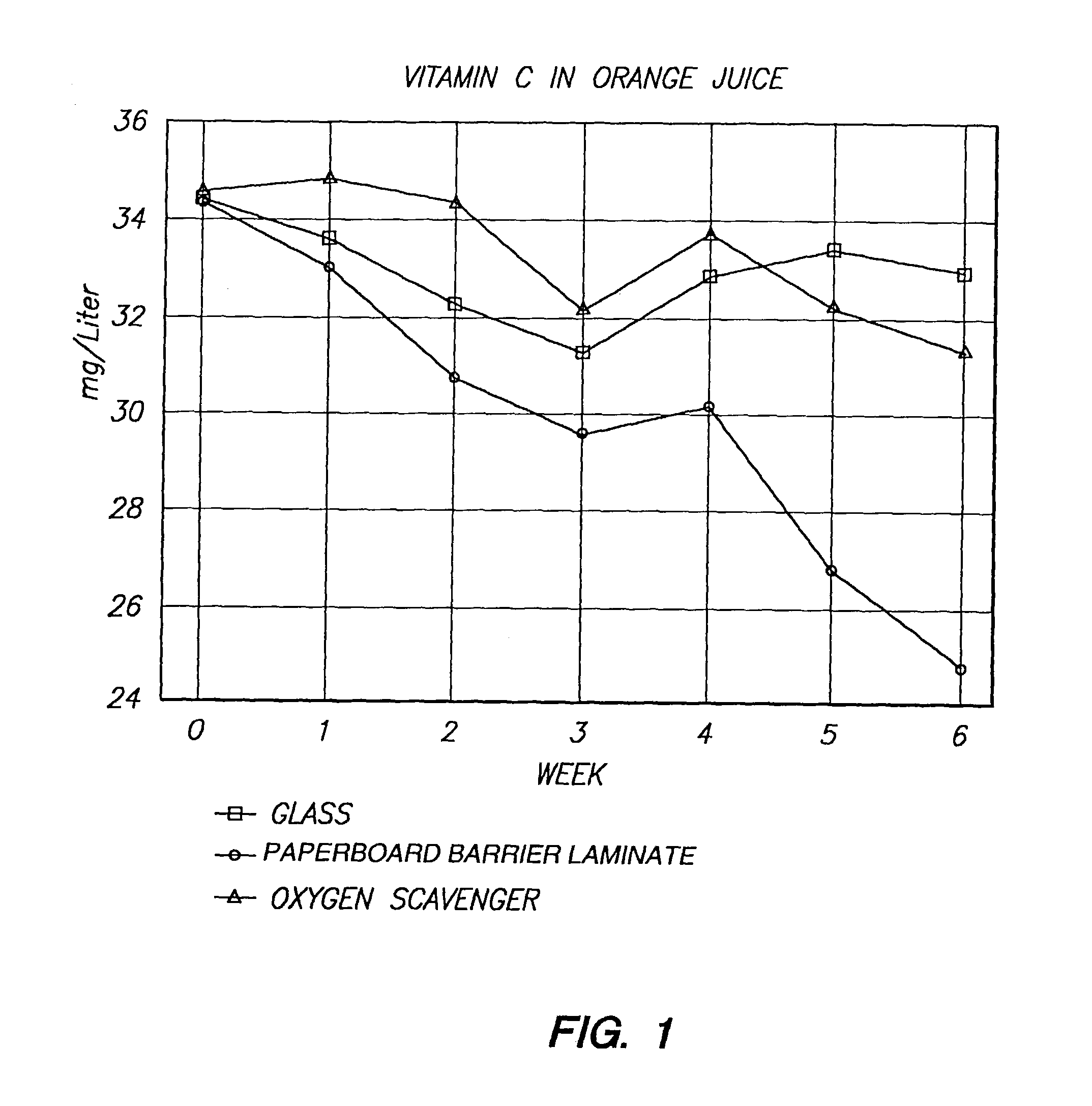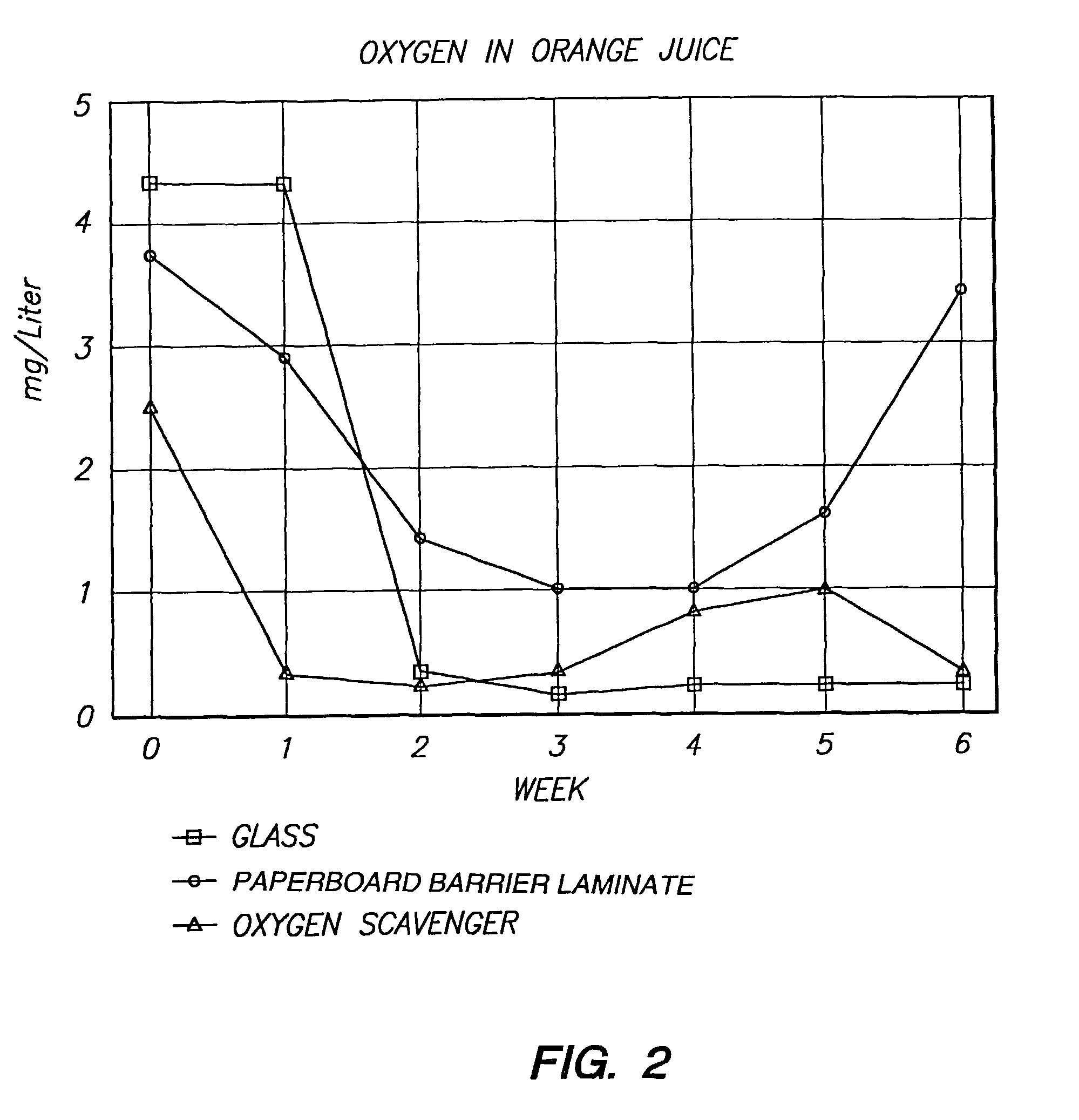Oxygen scavenging packaging
- Summary
- Abstract
- Description
- Claims
- Application Information
AI Technical Summary
Benefits of technology
Problems solved by technology
Method used
Image
Examples
example 1
[0113]A six-week shelf life study was conducted with orange juice packaged in commercial paperboard barrier laminate (PBL) cartons and in experimental carton samples using laminated board stock containing oxygen scavenging polymer in the inner layers of the cartons. PBL cartons consist of a laminated paperboard with a low density polyethylene coated on the outer surface of the paperboard and an oxygen barrier layer on the inside surface of the paperboard. The experimental oxygen scavenging (OS) cartons consisted of the PBL carton with a three-layer oxygen scavenging film (ABA Structure: Polyethylene / oxygen scavenging polymer / Polyethylene) further laminated on the inside surface of the oxygen barrier layer. PBL cartons containing loose strips of the three-layer oxygen scavenging film were also used. The oxygen scavenging films were one of three sizes: 4″×3½″, 4″×7″, and 4″×14″.
[0114]The juice cartons were stored at 40° F. and the orange juice was tested for ascorbic acid (vitamin C) ...
example 2
Organoleptic Tests
[0137]The organoleptics (negative effects on taste and odor) of the present invention were tested by comparing the taste of water and a fatty food packaged in an extrusion coated package having a layer of oxygen scavenging material incorporated as an internal layer of the package material with water and a fatty food packaged in a control package of identical structure but without the oxygen scavenging layer. Triangle tests with forced preferences were run using 28 trained panelists. In all cases, the sensory panel results showed a statistically significant (P<0.0001) preference for the packages containing the oxygen scavenging system over the control.
PUM
| Property | Measurement | Unit |
|---|---|---|
| Density | aaaaa | aaaaa |
Abstract
Description
Claims
Application Information
 Login to View More
Login to View More - R&D Engineer
- R&D Manager
- IP Professional
- Industry Leading Data Capabilities
- Powerful AI technology
- Patent DNA Extraction
Browse by: Latest US Patents, China's latest patents, Technical Efficacy Thesaurus, Application Domain, Technology Topic, Popular Technical Reports.
© 2024 PatSnap. All rights reserved.Legal|Privacy policy|Modern Slavery Act Transparency Statement|Sitemap|About US| Contact US: help@patsnap.com










